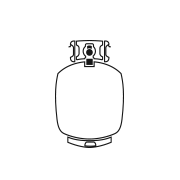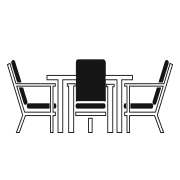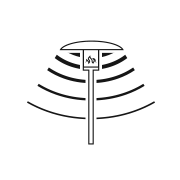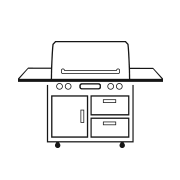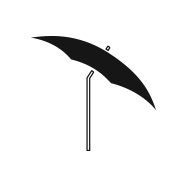Tips & Advice
Where should the handles on my spark guard be?
Should I choose fire glass or logs for my electric fireplace?
What are panels in an electric fireplace?
What is a "zone" in relation to patio heater controls?
Do I need single or multiple controls?
If the wall controls and regulators for your patio heater offer options with more than one switch, you will want to consider the number of patio heaters installed in your space.
If you have more than one heater in a space together, you may want to purchase a control box with as many controls as you have heaters. This way, you will avoid cluttering up your wall with individual switches.
If you only have one heater, or if your heaters are in different locations, a single wall switch with suffice.
Do I need a weatherproof cover for my outdoor controls and switches?
Many electronic patio heaters, fans, and even fire pits will come with a wall switch or control knob to allow for convenient adjustment of your item. These switches may come with the option of a weatherproof cover to protect your electronics from the elements.
If your switch will be installed in a protected area, such as under a pergola or permanent awning, you should be fine without a weatherproof cover. If there is no chance that the faceplate or switches will come in contact with rain or snow, a weatherproof cover is not necessary.
If your switch or control panel will be installed in an unprotected area that is open to the elements, you should make sure you purchase the options with a weatherproof cover to avoid water damage to your controls.
What is the right wattage to heat my space?
Patio heaters' heat output is often measured in terms of BTUs or watts. You may encounter a product that is configurable in terms of wattage. The product you should choose for your living space will depend on a number of variables.
The size of the space you are trying to heat is one of the biggest factors in choosing your wattage. Heating larger spaces will require a more powerful unit. A good rule of thumb to use when choosing a patio heater is this simple formula:
size of space in cubic feet x 10 = number of watts you will need
Another important factor to consider is how many heaters you would like to purchase. Some people prefer to have two or more slightly less powerful units scattered throughout the space to spread the warmth more evenly, and allow for individual operation and control.
The height of your patio heater (or the height you choose for your wall-mount heater) will also influence how much of the heat will reach your living space in a concentrated amount. The higher the unit, the more your heat will disperse before it reaches the ground. The lower the unit, the more concentrated the heat will be. If you know you will be mounting your wall-mount heater to the ceiling of your 10ft pergola, you may want to go for a slightly higher wattage.
If you have any questions on how many watts you will need to heat your space or with questions on heater placement and configuration, feel free to give us a call at (866) 578-8538, email us at info@starfiredirect.com or chat us live on the site.
How do I choose my chaise sectional orientation?
When choosing a sectional with a chaise lounge, you will often have the choice of selecting either a right-arm orientation or a left-arm orientation. This will determine which side of your sectional the chaise lounge will be situated. For a left-arm sectional, the chaise lounge will be on the left side of the piece. Subsequently, for a right-arm sectional, the longer chaise lounge section of your piece will be located on the right side.
There are a few factors to consider in choosing your sectional's orientation. If you will be combining your sectional with other pieces, make sure to choose the opposite orientation to where you would like your other pieces to sit. For example, if you would like your other sectional pieces to sit to the right of your chaise sectional, choose a left-arm orientation. In addition, it is important to consider the orientation of your room and the flow of foot traffic through your space.
Showing items 1-8 of 8.





































